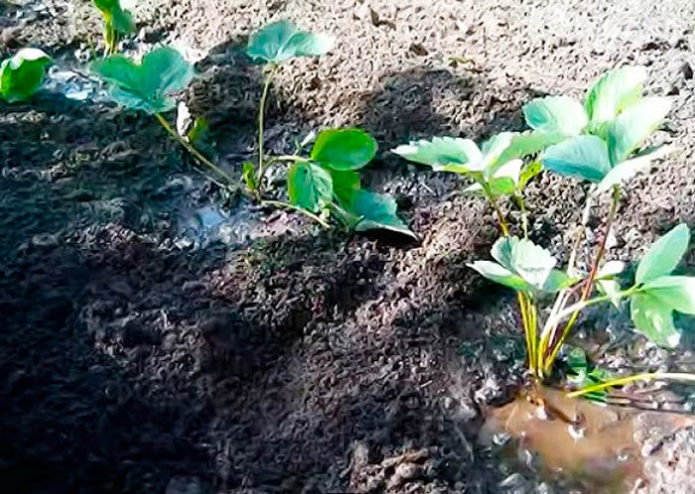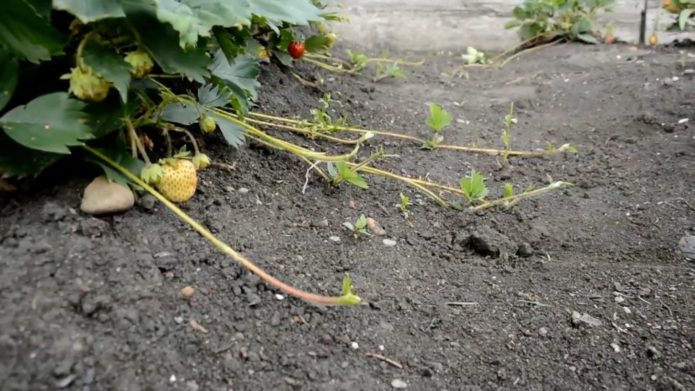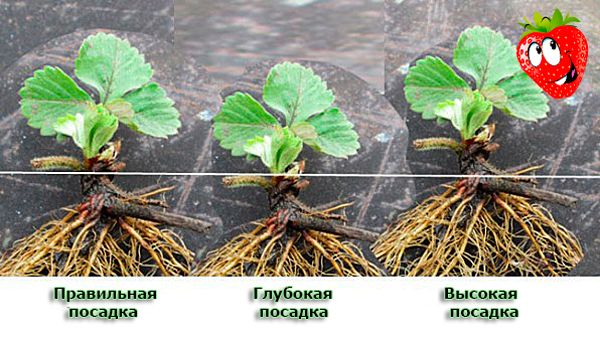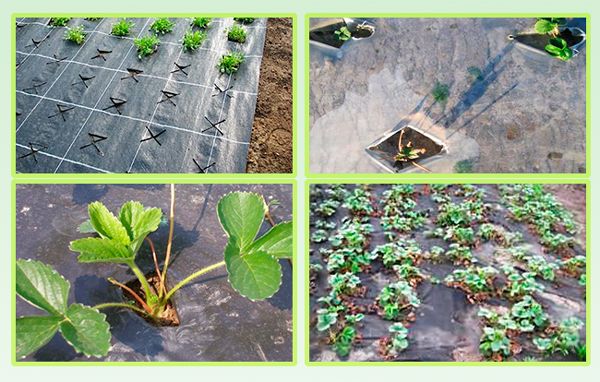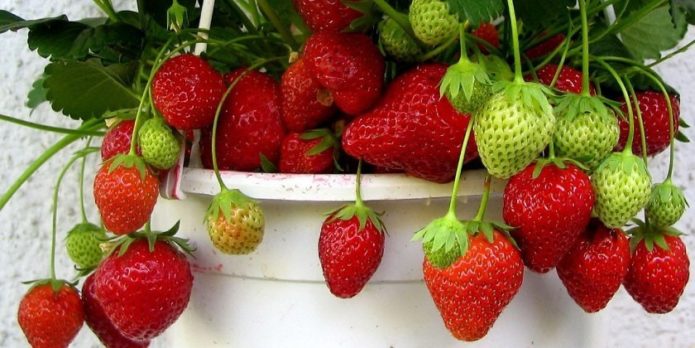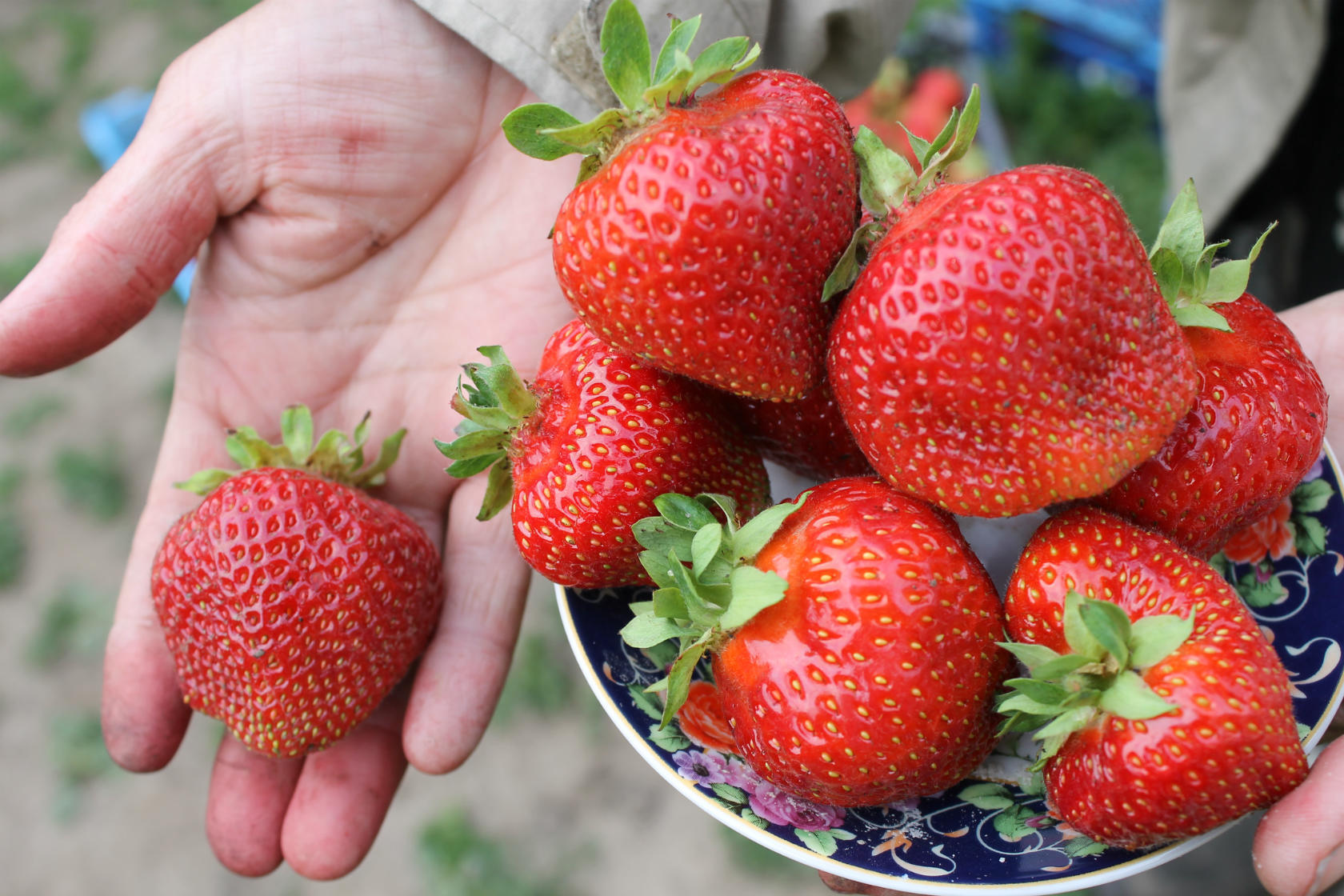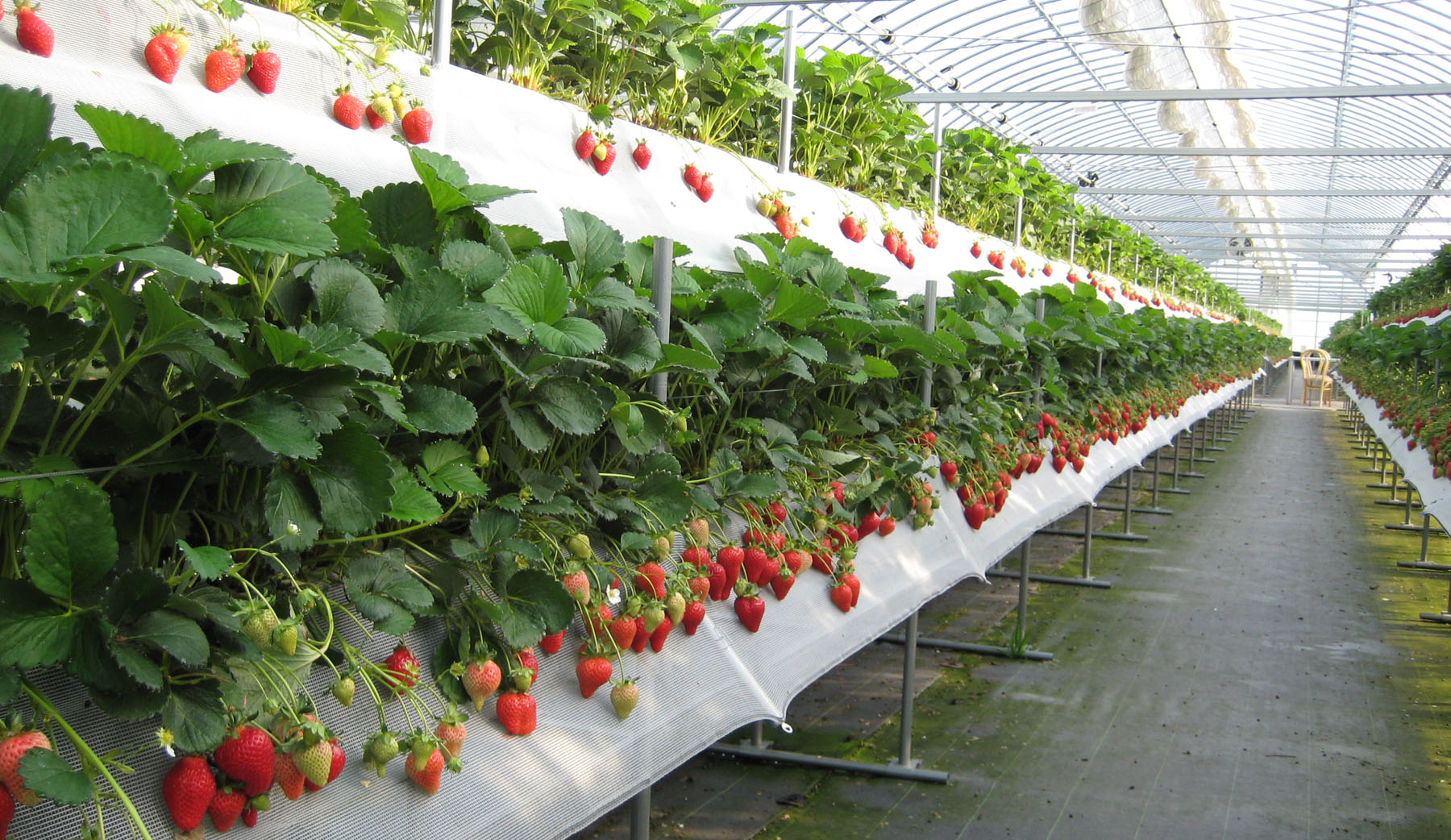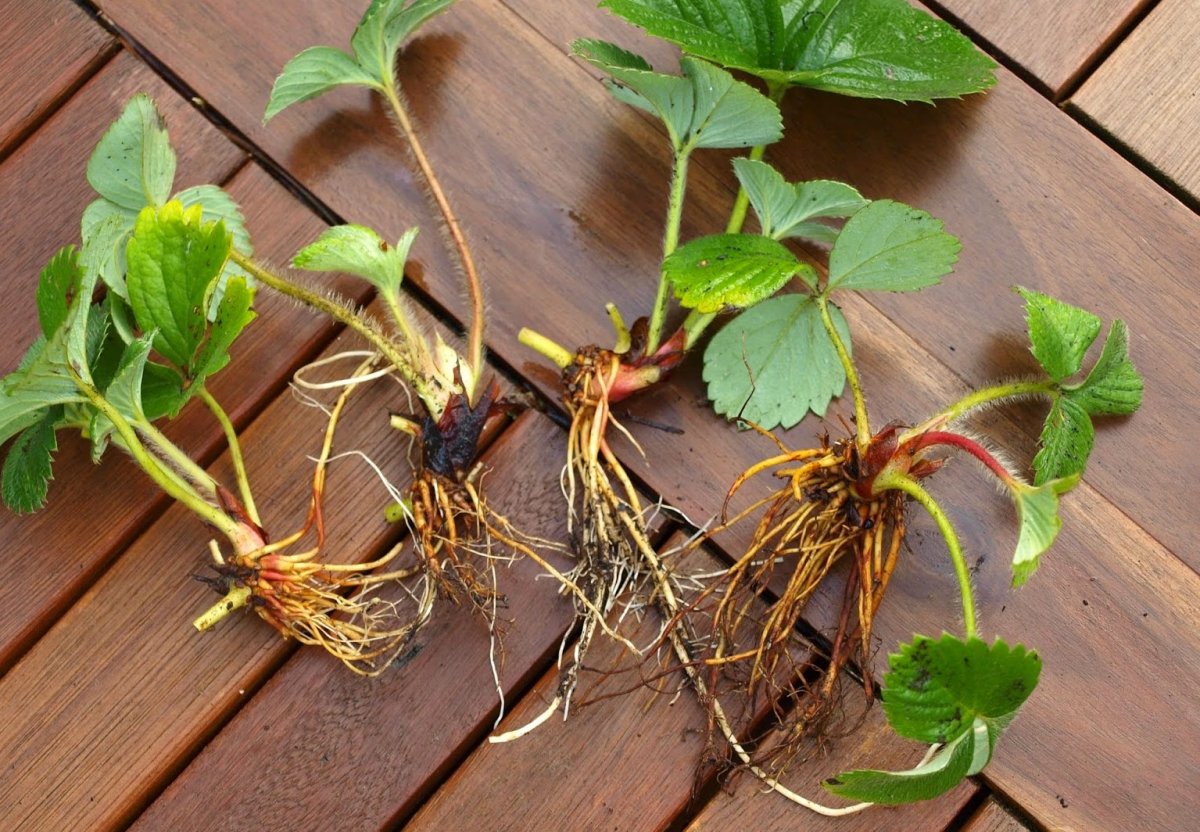The size and quality of the strawberry harvest depends on the variety of berries and the observance of agricultural techniques for its cultivation on the site. Garden strawberries do not like to stay in one place for a long time, and starting from the third year, they stop the formation of a rosette, reduce the number of peduncles, which affects the yield. In order for the renewal of the berry plantation to be successful, it is important to know when it is best to transplant strawberries to a new place: in autumn or spring.
Content
Why you need to transplant strawberries to a new place in the fall
The process of transplanting strawberries has two goals: plant renewal and change of their growing location. The peculiarity of this perennial plant is that from the third year of the growing season, the rosette begins to age sharply.
The change in the berry growing area is due to the accumulation of pathogenic bacteria and fungi in the soil.
Autumn transplant is preferable for the following reasons:
- Plants well-rooted in late autumn during wintering lay many peduncles, and already in the next season they begin to actively bear fruit. With a spring transplant, the plant spends energy on rooting, so it forms significantly fewer berries.
- Autumn weather is preferable for better rooting of young rosettes. Plants take root quickly during cool autumn days. In addition, the bushes do not need to be watered often because the moisture in the soil lasts longer and the likelihood of rain in autumn is greater than in spring.
- In autumn, there is a wide variety of choice of planting material and its price is lower than during the spring agiotage of summer residents. If the gardener decides to change the variety grown on the site, he can choose the most profitable option for himself.
- A transplant in the fall is also more profitable in terms of physical costs. The work can be carried out without haste, since there are much less urgent matters on the site in the fall than in the spring.
Transplant timing
It is impossible to answer the question when it is better to transplant strawberries to a new place in the fall. It all depends on the weather, as well as climatic conditions.
You should focus on the following indicators:
- climatic conditions of the region;
- microclimate of the site;
- weather;
- quality of planting material;
- ways to breed berries.
It is better to replant the rosettes at a temperature of 15 to 23 ° C, with sufficient soil moisture.
The optimal transplant times in different regions are as follows:
- The middle zone of Russia and the Moscow region - from mid-August to the end of September.
- Southern regions - from early September to mid-October.
- Northern regions and the Urals - from early June to late July.
IMPORTANT. The timing is adjusted depending on specific weather conditions. If frosts are planned, you should hurry with the transplant, otherwise the seedlings will not have time to take root.
Selection and preparation of a site for planting
The best place to grow strawberries is in the southwestern part of the plot with a slight slope to prevent moisture stagnation. The occurrence of groundwater in the area should be no higher than 80 cm. A low elevation will help protect the roots from rotting, which can appear in early spring after the snow has melted.
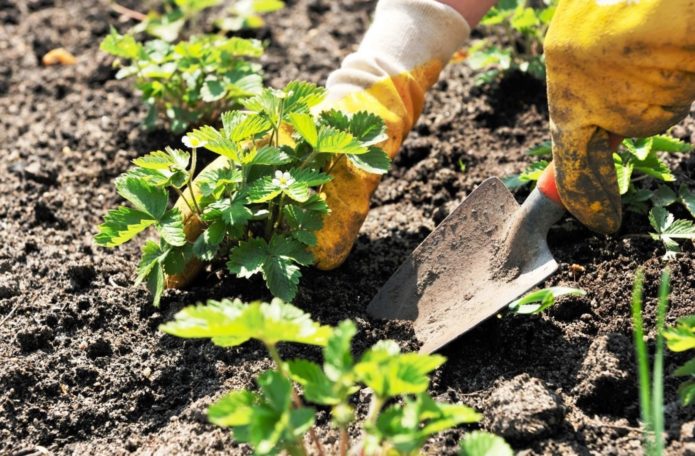
Weather conditions establish certain requirements for the rules of transplanting, watering, pruning plants
The selected area should be sunny, but not blown by strong through winds. A sufficient amount of sun will allow you to get not only large berries in large quantities, but also make them sweeter.
Soil preparation
Strawberries prefer fertile soil of 5.7–6.2 pH. Peat and sandy soils are not suitable for the plant.
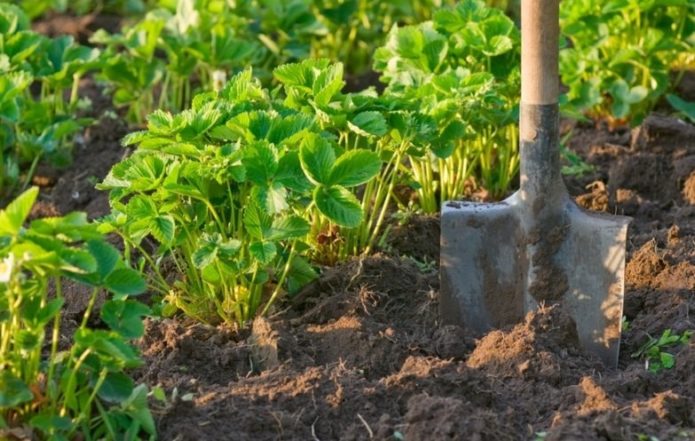
The correct selection of fertilizers, timely digging and loosening can create all conditions for the rapid growth and ripening of berries
The best predecessors of strawberries:
- radish;
- carrot;
- legumes;
- garlic;
- greens: parsley, dill;
- beet.
It is not recommended to plant strawberries in an area where the following crops were grown:
- nightshades, especially potatoes;
- cabbage;
- cucumbers.
ADVICE. It is advisable to plant the area chosen for strawberries in spring with onions or garlic, or sow siderates: lupines, cereals.
Dig a bed for strawberries deeply. 70 g of superphosphate, 30 g of ammonium nitrate and potassium salt are added to the soil per 1 square meter. After preparation, the site is left for 10-14 days for the soil to settle.
For disinfection, experienced gardeners advise treating the area with an antiseptic solution: add 3 tbsp for 10 liters of water. l. vegetable oil, 2 tbsp. l. ash, 2 tbsp. l. vinegar, 2 tbsp. l. liquid soap or dishwashing detergent.
Video: Transplanting strawberries to a new place
Transplant technology: step by step instructions with a photo
- A cloudy day is chosen for planting young rosettes. Ideally, if it starts raining right after disembarkation. If it passed the day before, it is also not worth delaying the landing. In the prepared soil, holes are made at a distance of 30–35 cm from each other, the row spacing is 50 cm.
- The depth of the hole is such that the roots are freely located in it and the growth point is not covered. Water is poured into the bottom of the hole, filling it to the brim. If this is not done, during top watering, the water may not reach the bottom of the roots and they will dry out.
- A seedling for planting is chosen with developed roots, with 4-5 leaves on a bush. The roots are disinfected with Fitosporin and Epin preparations. For the influx of nutrients, the roots are dipped in a mash made of clay, manure and water. The bush is set in a hole, the roots are straightened and carefully sprinkled with soil. The surface is lightly tamped.
- After planting, all the bushes are watered. If after watering some of the roots are bare, add soil. The surface around the plants is mulched with chopped straw or sawdust. In hot sunny weather, the sockets must be covered with burdock leaves.
- Instead of mulch, you can use planting young stock under black agrofibre. Cross-shaped cuts are made in the canvas over the holes and sockets are planted in them. The edges are fixed with boards or slingshots. Agrofibre will keep seedlings from weeds and frost, and will also help moisture in the soil.
Features of reproduction of remontant varieties
Unlike common varieties, remontant strawberries do not produce whiskers - aerial branches. Therefore, the planting is carried out by dividing an adult bush.
The rosette of the remontant variety is dug out of the soil. It consists of a central lignified root to which young shoots are attached. The bush is divided into several parts so that each one has personal roots 5-7 centimeters long.
Old leaves and remaining peduncles are removed from the separated process. If left on the outlet, the plant will lose strength and will take root too slowly. The root is dipped in Fitosporin-M for 2 hours. This technique will protect the plant from fungus and fill the roots with vitality. After this time, the sockets are planted according to the technology described above.
Plant care after transplantation and feeding for the winter
Young outlets need help to settle down. To do this, they are regularly watered, treated against pests, loosened up the soil, and removed weeds. If there is no rain, in the first 10 days, watering is carried out every other day. Then the frequency is reduced.
If mustaches begin to form on the transplanted plants, they are immediately removed so that the outlet does not waste energy. If there is a threat of frost, the strawberries are covered with covering material.
When transplanting strawberries and preparing them for winter, special attention is paid to feeding. At this time, the main nutrients of the plant are phosphorus and potassium.
Experts advise feeding the bushes with the following compounds to feed rooting outlets:
- Wood ash. It has the optimal content of phosphorus, potassium, and also contains calcium, boron, zinc, iodine and copper. It makes no sense to pour dry matter on the soil, since the nutrition of the roots in this case will be limited. For feeding, an infusion is prepared: 300 g of ash is dissolved in 10 liters of water and left for 4 days. Fertilize each bush with a liter of infusion.
- Superphosphate. Fertilizer is poured with boiling water for a day, during the infusion the solution is periodically stirred. After insisting, a liter of infusion is poured under each bush.
- Combined mixture. For 10 liters of water, take 20 g of nitroammofoska, 30 g of potassium sulfate, 250 g of wood ash. The components are insisted for a day, then 500 ml are consumed for each bush.
IMPORTANT. Top dressing is applied only to wet soil so that the fertilizer does not burn the roots.
Subject to the technology of transplanting strawberries in the fall, the plant takes root well over the winter. In the spring it will give a rich harvest.
